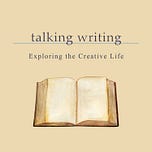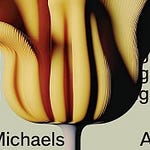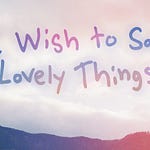David Byrne and Nick Hornby turned me onto John Carey’s What Good Are the Arts?, a manifesto against objective aesthetics. I’ve never met Byrne or Hornby, but they’ve both written so reverently about that book in a way that resonated with my existing thoughts about art that I knew I’d be into it. Carey picks apart the themes of “good” and “bad” art (or “high” and “low” art) in such a way that clearly demonstrates the absurdity of the idea that our tastes adhere to any sort of intrinsic objectivity.
Popularity plays a role in how things are passed down through time, and oftentimes the way things are rediscovered relies mostly on pure chance. Two examples that come to mind are Moby-Dick and Stoner, both of which relied on posthumous reprints that spurred other writers to proselytize the merits of those works. Another example: the outsider art of Henry Darger, which was discovered by his landlords. Even the term outsider art seems to imply a sense of interest in art made by people who are “not us” (with the “us” in this case being the established art world).
I firmly believe that everyone has the ability to create art, and although there might exist biological underpinnings that make certain people more adept at certain mediums or more driven to pursue creating art, I think that the main determinants are the encouragement received and the resources available. Success in the art world depends on the subjective tastes of the members and whether you can appeal to their sensibilities.
We live in an age now where gatekeeping is still very much in place yet also easier to get past. There’s no way to stop the inevitable extinction that’s always happening, but it is easier to dig for the obscure and try to provide it with some light.
Rather than listening to established voices in art and criticism, I’ve always pushed the idea that you can also find art through the art that you like. I wouldn’t know about John Carey if I didn’t follow up after reading Byrne and Hornby. I wouldn’t know about KRS-One if I didn’t look for him after hearing Sublime’s song (“and I know because of KRS-One”). I wouldn’t know about John Sloboda if I didn’t hunt down Ani Patel’s sources. Follow the footnotes.
Check out the Weird Music album on Bandcamp, iTunes, Apple Music, Spotify, and all other places where you can find music. Some of this material can also be found within the post “My Weird Music” on the Talking Writing website. For transcripts to these episodes, visit my personal Substack.
One thing that I’ve been thinking about a lot lately is how much great art is constantly being made that will never get heard or seen by anyone, let alone make its way into the future. There are many pieces and artists whom we know about who weren’t appreciated until years after their releases or deaths: Moby-Dick, Stoner, Emily Dickenson, Van Gogh, Otis Redding, Bach. And even though some artists do receive recognition within their lifetime, it doesn’t come until years or decades after they created the work.
But what about all the art that just gets dropped into the oversaturated ocean of the digital landscape and will never see the light of day because no one pays attention? What about all the art that gets made, but the artist doesn’t feel comfortable showing it to anyone for fear of criticism? What about all the art that never gets finished because the artist couldn’t stop tweaking it? Weird Music could easily be or have been in any of these categories.
And even though I keep my eyes and ears as open as I can, I’m fully aware that my musical taste and awareness make up only a tiny fraction of all the art that I would like. There’s never been any way to find all the music that would appeal to you, and even though discovery is easier than ever now, the depths of the ocean are even deeper. And the deeper the water, the less light there is.
For information about these interviews and the people in them, please visit this post from my personal Substack.














Share this post